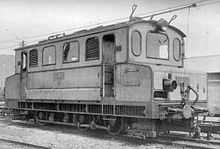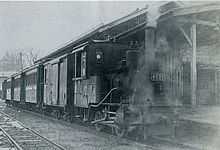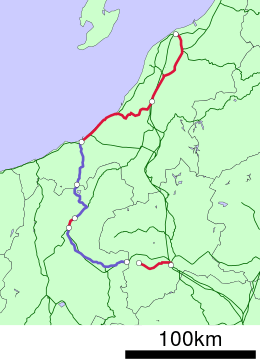Shin'etsu Main Line
| Shinetsu Main Line | ||||||||||||||||||||||||||||||||||||||||||||||||||||||||||||||||||||||||||||||||||||||||||||||||||||||||||||||||||||||||||||||||||||||||||||||||||||||||||||||||||||||||||||||||||||||||||||||||||||||||||||||||||||||||||||||||||||||||||||||||||||||||||||||||||||||||||||||||||||||||||||||||||||||||||||||||||||||||||||||||||||||||||||||||||||||||||||||||||||||||||||||||||||||||||||||||||||||||||||||||||||||||||||||||||||||||||||||||||||||||||||||||||||||||||||||||||||||||||||||||||||||||||||||||||||||||||||||||||||||||||||||||||||||||||||||||||||||||||||||||||||||||||||||||||||||||||||||||||||||||||||||||||||||||||||||||||||||||||||||||||||||||||||||||||||||||||||||||||||||||||||||||||||||||||||||||||||||||||||||||||||||||||||||||||||||||||||||||||||||||||||||||||||||||||||||||||||||||||||||||||||||||||||||||||
|---|---|---|---|---|---|---|---|---|---|---|---|---|---|---|---|---|---|---|---|---|---|---|---|---|---|---|---|---|---|---|---|---|---|---|---|---|---|---|---|---|---|---|---|---|---|---|---|---|---|---|---|---|---|---|---|---|---|---|---|---|---|---|---|---|---|---|---|---|---|---|---|---|---|---|---|---|---|---|---|---|---|---|---|---|---|---|---|---|---|---|---|---|---|---|---|---|---|---|---|---|---|---|---|---|---|---|---|---|---|---|---|---|---|---|---|---|---|---|---|---|---|---|---|---|---|---|---|---|---|---|---|---|---|---|---|---|---|---|---|---|---|---|---|---|---|---|---|---|---|---|---|---|---|---|---|---|---|---|---|---|---|---|---|---|---|---|---|---|---|---|---|---|---|---|---|---|---|---|---|---|---|---|---|---|---|---|---|---|---|---|---|---|---|---|---|---|---|---|---|---|---|---|---|---|---|---|---|---|---|---|---|---|---|---|---|---|---|---|---|---|---|---|---|---|---|---|---|---|---|---|---|---|---|---|---|---|---|---|---|---|---|---|---|---|---|---|---|---|---|---|---|---|---|---|---|---|---|---|---|---|---|---|---|---|---|---|---|---|---|---|---|---|---|---|---|---|---|---|---|---|---|---|---|---|---|---|---|---|---|---|---|---|---|---|---|---|---|---|---|---|---|---|---|---|---|---|---|---|---|---|---|---|---|---|---|---|---|---|---|---|---|---|---|---|---|---|---|---|---|---|---|---|---|---|---|---|---|---|---|---|---|---|---|---|---|---|---|---|---|---|---|---|---|---|---|---|---|---|---|---|---|---|---|---|---|---|---|---|---|---|---|---|---|---|---|---|---|---|---|---|---|---|---|---|---|---|---|---|---|---|---|---|---|---|---|---|---|---|---|---|---|---|---|---|---|---|---|---|---|---|---|---|---|---|---|---|---|---|---|---|---|---|---|---|---|---|---|---|---|---|---|---|---|---|---|---|---|---|---|---|---|---|---|---|---|---|---|---|---|---|---|---|---|---|---|---|---|---|---|---|---|---|---|---|---|---|---|---|---|---|---|---|---|---|---|---|---|---|---|---|---|---|---|---|---|---|---|---|---|---|---|---|---|---|---|---|---|---|---|---|---|---|---|---|---|---|---|---|---|---|---|---|---|---|---|---|---|---|---|---|---|---|---|---|---|---|---|---|---|---|---|---|---|---|---|---|---|---|---|---|---|---|---|---|---|---|---|---|---|---|---|---|---|---|---|---|---|---|---|---|---|---|---|---|---|---|---|---|---|---|---|---|---|---|---|---|---|---|---|---|---|---|---|---|---|---|---|---|---|---|---|---|---|---|---|---|---|---|---|---|---|---|---|---|---|---|---|---|---|---|---|---|---|---|---|---|---|---|---|---|---|---|---|---|---|---|---|---|---|---|---|---|---|---|---|---|---|---|---|---|---|---|---|---|---|---|---|---|---|---|---|---|---|---|---|---|---|---|---|---|---|---|---|---|---|---|---|---|---|---|---|---|---|---|---|---|---|---|---|---|---|---|---|---|---|---|---|---|---|---|---|---|---|---|---|---|---|---|---|---|---|---|---|---|---|---|---|---|---|---|---|---|---|---|---|---|---|---|---|---|---|---|---|---|---|---|---|---|---|---|---|---|---|---|---|---|---|---|---|---|---|---|---|---|---|---|---|---|---|---|---|---|---|---|---|---|---|---|---|---|---|---|---|---|---|---|---|---|---|---|---|---|---|---|---|---|---|---|---|---|---|---|---|---|---|---|---|---|---|---|---|---|---|---|---|---|---|---|---|---|---|---|---|---|---|---|---|---|---|---|---|---|---|---|---|---|---|---|
|
Red: Shinetsu Main Line Blue: Shinano Railway Line, Kita-Shinano Line and Myōkō Haneuma Line | ||||||||||||||||||||||||||||||||||||||||||||||||||||||||||||||||||||||||||||||||||||||||||||||||||||||||||||||||||||||||||||||||||||||||||||||||||||||||||||||||||||||||||||||||||||||||||||||||||||||||||||||||||||||||||||||||||||||||||||||||||||||||||||||||||||||||||||||||||||||||||||||||||||||||||||||||||||||||||||||||||||||||||||||||||||||||||||||||||||||||||||||||||||||||||||||||||||||||||||||||||||||||||||||||||||||||||||||||||||||||||||||||||||||||||||||||||||||||||||||||||||||||||||||||||||||||||||||||||||||||||||||||||||||||||||||||||||||||||||||||||||||||||||||||||||||||||||||||||||||||||||||||||||||||||||||||||||||||||||||||||||||||||||||||||||||||||||||||||||||||||||||||||||||||||||||||||||||||||||||||||||||||||||||||||||||||||||||||||||||||||||||||||||||||||||||||||||||||||||||||||||||||||||||||||
| Overview | ||||||||||||||||||||||||||||||||||||||||||||||||||||||||||||||||||||||||||||||||||||||||||||||||||||||||||||||||||||||||||||||||||||||||||||||||||||||||||||||||||||||||||||||||||||||||||||||||||||||||||||||||||||||||||||||||||||||||||||||||||||||||||||||||||||||||||||||||||||||||||||||||||||||||||||||||||||||||||||||||||||||||||||||||||||||||||||||||||||||||||||||||||||||||||||||||||||||||||||||||||||||||||||||||||||||||||||||||||||||||||||||||||||||||||||||||||||||||||||||||||||||||||||||||||||||||||||||||||||||||||||||||||||||||||||||||||||||||||||||||||||||||||||||||||||||||||||||||||||||||||||||||||||||||||||||||||||||||||||||||||||||||||||||||||||||||||||||||||||||||||||||||||||||||||||||||||||||||||||||||||||||||||||||||||||||||||||||||||||||||||||||||||||||||||||||||||||||||||||||||||||||||||||||||||
| Native name | 信越本線 | |||||||||||||||||||||||||||||||||||||||||||||||||||||||||||||||||||||||||||||||||||||||||||||||||||||||||||||||||||||||||||||||||||||||||||||||||||||||||||||||||||||||||||||||||||||||||||||||||||||||||||||||||||||||||||||||||||||||||||||||||||||||||||||||||||||||||||||||||||||||||||||||||||||||||||||||||||||||||||||||||||||||||||||||||||||||||||||||||||||||||||||||||||||||||||||||||||||||||||||||||||||||||||||||||||||||||||||||||||||||||||||||||||||||||||||||||||||||||||||||||||||||||||||||||||||||||||||||||||||||||||||||||||||||||||||||||||||||||||||||||||||||||||||||||||||||||||||||||||||||||||||||||||||||||||||||||||||||||||||||||||||||||||||||||||||||||||||||||||||||||||||||||||||||||||||||||||||||||||||||||||||||||||||||||||||||||||||||||||||||||||||||||||||||||||||||||||||||||||||||||||||||||||||||||
| Status | Operarional | |||||||||||||||||||||||||||||||||||||||||||||||||||||||||||||||||||||||||||||||||||||||||||||||||||||||||||||||||||||||||||||||||||||||||||||||||||||||||||||||||||||||||||||||||||||||||||||||||||||||||||||||||||||||||||||||||||||||||||||||||||||||||||||||||||||||||||||||||||||||||||||||||||||||||||||||||||||||||||||||||||||||||||||||||||||||||||||||||||||||||||||||||||||||||||||||||||||||||||||||||||||||||||||||||||||||||||||||||||||||||||||||||||||||||||||||||||||||||||||||||||||||||||||||||||||||||||||||||||||||||||||||||||||||||||||||||||||||||||||||||||||||||||||||||||||||||||||||||||||||||||||||||||||||||||||||||||||||||||||||||||||||||||||||||||||||||||||||||||||||||||||||||||||||||||||||||||||||||||||||||||||||||||||||||||||||||||||||||||||||||||||||||||||||||||||||||||||||||||||||||||||||||||||||||
| Locale | Gunma, Nagano, Niigata prefectures | |||||||||||||||||||||||||||||||||||||||||||||||||||||||||||||||||||||||||||||||||||||||||||||||||||||||||||||||||||||||||||||||||||||||||||||||||||||||||||||||||||||||||||||||||||||||||||||||||||||||||||||||||||||||||||||||||||||||||||||||||||||||||||||||||||||||||||||||||||||||||||||||||||||||||||||||||||||||||||||||||||||||||||||||||||||||||||||||||||||||||||||||||||||||||||||||||||||||||||||||||||||||||||||||||||||||||||||||||||||||||||||||||||||||||||||||||||||||||||||||||||||||||||||||||||||||||||||||||||||||||||||||||||||||||||||||||||||||||||||||||||||||||||||||||||||||||||||||||||||||||||||||||||||||||||||||||||||||||||||||||||||||||||||||||||||||||||||||||||||||||||||||||||||||||||||||||||||||||||||||||||||||||||||||||||||||||||||||||||||||||||||||||||||||||||||||||||||||||||||||||||||||||||||||||
| Operation | ||||||||||||||||||||||||||||||||||||||||||||||||||||||||||||||||||||||||||||||||||||||||||||||||||||||||||||||||||||||||||||||||||||||||||||||||||||||||||||||||||||||||||||||||||||||||||||||||||||||||||||||||||||||||||||||||||||||||||||||||||||||||||||||||||||||||||||||||||||||||||||||||||||||||||||||||||||||||||||||||||||||||||||||||||||||||||||||||||||||||||||||||||||||||||||||||||||||||||||||||||||||||||||||||||||||||||||||||||||||||||||||||||||||||||||||||||||||||||||||||||||||||||||||||||||||||||||||||||||||||||||||||||||||||||||||||||||||||||||||||||||||||||||||||||||||||||||||||||||||||||||||||||||||||||||||||||||||||||||||||||||||||||||||||||||||||||||||||||||||||||||||||||||||||||||||||||||||||||||||||||||||||||||||||||||||||||||||||||||||||||||||||||||||||||||||||||||||||||||||||||||||||||||||||||
| Opening | Stages between 1885-1904 | |||||||||||||||||||||||||||||||||||||||||||||||||||||||||||||||||||||||||||||||||||||||||||||||||||||||||||||||||||||||||||||||||||||||||||||||||||||||||||||||||||||||||||||||||||||||||||||||||||||||||||||||||||||||||||||||||||||||||||||||||||||||||||||||||||||||||||||||||||||||||||||||||||||||||||||||||||||||||||||||||||||||||||||||||||||||||||||||||||||||||||||||||||||||||||||||||||||||||||||||||||||||||||||||||||||||||||||||||||||||||||||||||||||||||||||||||||||||||||||||||||||||||||||||||||||||||||||||||||||||||||||||||||||||||||||||||||||||||||||||||||||||||||||||||||||||||||||||||||||||||||||||||||||||||||||||||||||||||||||||||||||||||||||||||||||||||||||||||||||||||||||||||||||||||||||||||||||||||||||||||||||||||||||||||||||||||||||||||||||||||||||||||||||||||||||||||||||||||||||||||||||||||||||||||
| Closed |
Yokokawa - Karuizawa: 1 October 1997 Karuizawa - Shinonoi: 1 October 1997 (Converted to the Shinano Railway Line) Nagano - Naoetsu: 14 March 2015 (Converted to the Shinano Railway Kita-Shinano Line and the Echigo Tokimeki Railway Myōkō Haneuma Line) | |||||||||||||||||||||||||||||||||||||||||||||||||||||||||||||||||||||||||||||||||||||||||||||||||||||||||||||||||||||||||||||||||||||||||||||||||||||||||||||||||||||||||||||||||||||||||||||||||||||||||||||||||||||||||||||||||||||||||||||||||||||||||||||||||||||||||||||||||||||||||||||||||||||||||||||||||||||||||||||||||||||||||||||||||||||||||||||||||||||||||||||||||||||||||||||||||||||||||||||||||||||||||||||||||||||||||||||||||||||||||||||||||||||||||||||||||||||||||||||||||||||||||||||||||||||||||||||||||||||||||||||||||||||||||||||||||||||||||||||||||||||||||||||||||||||||||||||||||||||||||||||||||||||||||||||||||||||||||||||||||||||||||||||||||||||||||||||||||||||||||||||||||||||||||||||||||||||||||||||||||||||||||||||||||||||||||||||||||||||||||||||||||||||||||||||||||||||||||||||||||||||||||||||||||
| Operator(s) | JR East | |||||||||||||||||||||||||||||||||||||||||||||||||||||||||||||||||||||||||||||||||||||||||||||||||||||||||||||||||||||||||||||||||||||||||||||||||||||||||||||||||||||||||||||||||||||||||||||||||||||||||||||||||||||||||||||||||||||||||||||||||||||||||||||||||||||||||||||||||||||||||||||||||||||||||||||||||||||||||||||||||||||||||||||||||||||||||||||||||||||||||||||||||||||||||||||||||||||||||||||||||||||||||||||||||||||||||||||||||||||||||||||||||||||||||||||||||||||||||||||||||||||||||||||||||||||||||||||||||||||||||||||||||||||||||||||||||||||||||||||||||||||||||||||||||||||||||||||||||||||||||||||||||||||||||||||||||||||||||||||||||||||||||||||||||||||||||||||||||||||||||||||||||||||||||||||||||||||||||||||||||||||||||||||||||||||||||||||||||||||||||||||||||||||||||||||||||||||||||||||||||||||||||||||||||
| Technical | ||||||||||||||||||||||||||||||||||||||||||||||||||||||||||||||||||||||||||||||||||||||||||||||||||||||||||||||||||||||||||||||||||||||||||||||||||||||||||||||||||||||||||||||||||||||||||||||||||||||||||||||||||||||||||||||||||||||||||||||||||||||||||||||||||||||||||||||||||||||||||||||||||||||||||||||||||||||||||||||||||||||||||||||||||||||||||||||||||||||||||||||||||||||||||||||||||||||||||||||||||||||||||||||||||||||||||||||||||||||||||||||||||||||||||||||||||||||||||||||||||||||||||||||||||||||||||||||||||||||||||||||||||||||||||||||||||||||||||||||||||||||||||||||||||||||||||||||||||||||||||||||||||||||||||||||||||||||||||||||||||||||||||||||||||||||||||||||||||||||||||||||||||||||||||||||||||||||||||||||||||||||||||||||||||||||||||||||||||||||||||||||||||||||||||||||||||||||||||||||||||||||||||||||||||
| Line length | 181.5 km (112.8 mi) | |||||||||||||||||||||||||||||||||||||||||||||||||||||||||||||||||||||||||||||||||||||||||||||||||||||||||||||||||||||||||||||||||||||||||||||||||||||||||||||||||||||||||||||||||||||||||||||||||||||||||||||||||||||||||||||||||||||||||||||||||||||||||||||||||||||||||||||||||||||||||||||||||||||||||||||||||||||||||||||||||||||||||||||||||||||||||||||||||||||||||||||||||||||||||||||||||||||||||||||||||||||||||||||||||||||||||||||||||||||||||||||||||||||||||||||||||||||||||||||||||||||||||||||||||||||||||||||||||||||||||||||||||||||||||||||||||||||||||||||||||||||||||||||||||||||||||||||||||||||||||||||||||||||||||||||||||||||||||||||||||||||||||||||||||||||||||||||||||||||||||||||||||||||||||||||||||||||||||||||||||||||||||||||||||||||||||||||||||||||||||||||||||||||||||||||||||||||||||||||||||||||||||||||||||
| Track gauge | 1,067 mm (3 ft 6 in) | |||||||||||||||||||||||||||||||||||||||||||||||||||||||||||||||||||||||||||||||||||||||||||||||||||||||||||||||||||||||||||||||||||||||||||||||||||||||||||||||||||||||||||||||||||||||||||||||||||||||||||||||||||||||||||||||||||||||||||||||||||||||||||||||||||||||||||||||||||||||||||||||||||||||||||||||||||||||||||||||||||||||||||||||||||||||||||||||||||||||||||||||||||||||||||||||||||||||||||||||||||||||||||||||||||||||||||||||||||||||||||||||||||||||||||||||||||||||||||||||||||||||||||||||||||||||||||||||||||||||||||||||||||||||||||||||||||||||||||||||||||||||||||||||||||||||||||||||||||||||||||||||||||||||||||||||||||||||||||||||||||||||||||||||||||||||||||||||||||||||||||||||||||||||||||||||||||||||||||||||||||||||||||||||||||||||||||||||||||||||||||||||||||||||||||||||||||||||||||||||||||||||||||||||||
| Electrification | 1,500 V DC overhead catenary | |||||||||||||||||||||||||||||||||||||||||||||||||||||||||||||||||||||||||||||||||||||||||||||||||||||||||||||||||||||||||||||||||||||||||||||||||||||||||||||||||||||||||||||||||||||||||||||||||||||||||||||||||||||||||||||||||||||||||||||||||||||||||||||||||||||||||||||||||||||||||||||||||||||||||||||||||||||||||||||||||||||||||||||||||||||||||||||||||||||||||||||||||||||||||||||||||||||||||||||||||||||||||||||||||||||||||||||||||||||||||||||||||||||||||||||||||||||||||||||||||||||||||||||||||||||||||||||||||||||||||||||||||||||||||||||||||||||||||||||||||||||||||||||||||||||||||||||||||||||||||||||||||||||||||||||||||||||||||||||||||||||||||||||||||||||||||||||||||||||||||||||||||||||||||||||||||||||||||||||||||||||||||||||||||||||||||||||||||||||||||||||||||||||||||||||||||||||||||||||||||||||||||||||||||
| ||||||||||||||||||||||||||||||||||||||||||||||||||||||||||||||||||||||||||||||||||||||||||||||||||||||||||||||||||||||||||||||||||||||||||||||||||||||||||||||||||||||||||||||||||||||||||||||||||||||||||||||||||||||||||||||||||||||||||||||||||||||||||||||||||||||||||||||||||||||||||||||||||||||||||||||||||||||||||||||||||||||||||||||||||||||||||||||||||||||||||||||||||||||||||||||||||||||||||||||||||||||||||||||||||||||||||||||||||||||||||||||||||||||||||||||||||||||||||||||||||||||||||||||||||||||||||||||||||||||||||||||||||||||||||||||||||||||||||||||||||||||||||||||||||||||||||||||||||||||||||||||||||||||||||||||||||||||||||||||||||||||||||||||||||||||||||||||||||||||||||||||||||||||||||||||||||||||||||||||||||||||||||||||||||||||||||||||||||||||||||||||||||||||||||||||||||||||||||||||||||||||||||||||||||
The Shinetsu Main Line (信越本線 Shin'etsu-honsen) is a railway line, consisting of three geographically separated sections, operated by the East Japan Railway Company (JR East) in Japan. Originally one continuous line, the first section (29.7 km) connects Takasaki Station to Yokokawa Station in Gunma Prefecture, the second section (9.3 km) connects Shinonoi Station to Nagano Station in Nagano Prefecture and the third section (136.3 km) connects Naoetsu Station to Niigata Station in Niigata Prefecture. Additionally, there are three freight branches; from Echigo-Ishiyama Station to Niigata Freight Terminal, from Kami-Nuttari Junction to Nuttari Station, and from Kami-Nuttari Junction to Higashi-Niigata-kō Station. The name of the line refers to the old names for Nagano and Niigata Prefectures, Shinano (信濃) and Echigo (越後).
The original line was separated into two sections as a result of the abandonment of the section between Yokokawa and Karuizawa and the reassignment of operations over the section between Karuizawa and Shinonoi to the third-sector Shinano Railway, both occurring on October 1, 1997 in conjunction with the opening of the Nagano Shinkansen between Takasaki and Nagano stations. The abandoned section through the Usui Pass was famous for its steep 66.7‰ gradient.[1]
When the Hokuriku Shinkansen extension to Kanazawa opened on 14 March 2015, the portion of the Shinetsu Main Line between Nagano and Naoetsu was also spun off to two third-sector railway operators, the Shinano Railway in Nagano Prefecture, and the Echigo Tokimeki Railway in Niigata Prefecture. This resulted in the present status of the line with three separate sections.[2]
Stations
Takasaki–Yokokawa
| Station | Distance (km) |
Connections | Location | |
|---|---|---|---|---|
| Takasaki | 0.0 | Joetsu Shinkansen, Hokuriku Shinkansen, Takasaki Line, Hachikō Line, Jōetsu Line, Ryōmō Line Joshin Dentetsu Joshin Line |
Takasaki | Gunma Prefecture |
| Kita-Takasaki | 2.4 | |||
| Gumma-Yawata | 6.4 | |||
| Annaka | 10.6 | Annaka | ||
| Isobe | 17.6 | |||
| Matsuida | 22.7 | |||
| Nishi-Matsuida | 23.9 | |||
| Yokokawa | 29.7 | |||
Yokokawa–Shinonoi
The section between Yokokawa and Karuizawa was closed and the section between Karuizawa and Shinonoi was transferred to the ownership of the third-sector railway operator Shinano Railway from 1 October 1997 with the opening of the Hokuriku Shinkansen (Nagano Shinkansen) between Takasaki and Nagano.
Shinonoi–Nagano
| Station | Distance (km) |
Connections | Location | |
|---|---|---|---|---|
| Shinonoi | 0.0 | Shinonoi Line, Shinano Railway Line |
Nagano | Nagano Prefecture |
| Imai | 2.1 | |||
| Kawanakajima | 4.3 | |||
| Amori | 6.4 | |||
| Nagano | 9.3 | Hokuriku Shinkansen Shinano Railway Kita-Shinano Line Nagano Electric Railway | ||
Nagano–Naoetsu
The section between Nagano and Naoetsu was transferred to the ownership of the third-sector railway operators Shinano Railway and Echigo Tokimeki Railway from 14 March 2015 with the opening of the Hokuriku Shinkansen extension north of Nagano.
Naoetsu–Niigata
| Station | Distance (km) |
Connections | Location | |
|---|---|---|---|---|
| Naoetsu | 84.3 | Echigo Tokimeki Railway Myōkō Haneuma Line Echigo Tokimeki Railway Nihonkai Hisui Line |
Jōetsu | Niigata Prefecture |
| Kuroi | 87.0 | |||
| Saigata | 91.4 | Hokuhoku Line | ||
| Dosokohama | 93.7 | |||
| Katamachi | 95.5 | |||
| Jōgehama | 98.3 | |||
| Kakizaki | 101.9 | |||
| Yoneyama | 107.8 | Kashiwazaki | ||
| Kasashima | 111.7 | |||
| Ōmigawa | 113.9 | |||
| Kujiranami | 116.9 | |||
| Kashiwazaki | 120.6 | Echigo Line | ||
| Ibarame | 123.6 | |||
| Yasuda | 126.5 | |||
| Kitajō | 129.1 | |||
| Echigo-Hirota | 132.4 | |||
| Nagatori | 135.1 | |||
| Tsukayama | 140.1 | Nagaoka | ||
| Echigo-Iwatsuka | 144.8 | |||
| Raikōji | 147.6 | |||
| Maekawa | 151.7 | |||
| Miyauchi | 154.3 | Jōetsu Line | ||
| Minami-Nagaoka Freight Terminal | 155.7 | |||
| Nagaoka | 157.3 | Jōetsu Shinkansen | ||
| Kita-Nagaoka | 159.8 | |||
| Oshikiri | 164.2 | |||
| Mitsuke | 168.7 | Mitsuke | ||
| Obiori | 172.8 | Sanjō | ||
| Tōkōji | 175.4 | |||
| Sanjō | 178.9 | |||
| Higashi-Sanjō | 180.5 | Yahiko Line | ||
| Honai | 184.3 | |||
| Kamo | 188.1 | Kamo | ||
| Hanyūda | 192.2 | Tagami | ||
| Tagami | 195.4 | |||
| Yashiroda | 199.1 | Akiha-ku, Niigata | ||
| Furutsu | 202.2 | |||
| Niitsu | 205.4 | Uetsu Main Line, Banetsu West Line | ||
| Satsukino | 206.9 | |||
| Ogikawa | 209.2 | |||
| Kameda | 214.1 | Kōnan-ku, Niigata | ||
| Echigo-Ishiyama | 216.5 | Higashi-ku, Niigata | ||
| Kaminuttari Junction | (218.7) | Chūō-ku, Niigata | ||
| Niigata | 220.6 | Jōetsu Shinkansen, Hakushin Line, Echigo Line | ||
History

The Japanese Government Railways opened the Takasaki to Yokokawa section in 1885, the Naoetsu to Sekiyama section the following year, and the Sekiyama - Nagano - Karuizawa section in 1888. In order to surmount the 552 metre altitude difference between Yokokawa and Karuizawa (which are 10 km apart), it then constructed an Abt rack section through the Usui Pass, which opened in 1893, and was double-tracked for 1 km from Karuizawa to the top of the rack section. A horse-drawn tramway operated between Yokokawa and Karuizawa until the rack section opened.
The Hokuetsu Railway opened the Naoetsu to Nagaoka section in 1897, extending the line to Niigata in 1904. Both companies were nationalised in 1907. In 1912, the rack section was electrified using third rail at 600 V DC, this being the first use of this method in Japan.
Double-tracking
The Karuizawa to Nagano section was double-tracked between 1917 and 1920, with the Nagaoka to Miyauchi section double-tracked in 1931, and the Niitsu - Kamo section in 1944. Double-tracking of the remainder of the Niigata to Naoetsu line was undertaken in sections between 1958 and 1973.
Double-tracking of the remainder of the Takasaki to Kaminagano line was undertaken in sections between 1963 and 1973, commencing with the replacement of the rack mechanism with an adhesion only electrified (1,500 V DC catenary) operation on the 1 in 15 (6.7%) grade. The rack equipment was initially kept as a contingency, and removed two months after the adhesion-only operation commenced and had proved its reliability.
The Kurohime to Myoko-Kogen section was double-tracked in conjunction with a realignment in 1980. The Mure to Kurohime section was also realigned and prepared for double-tracking (including new double-track size tunnels), but the second track was not laid.
Electrification
The Miyauchi to Nagaoka section was electrified in 1947 at 1,500 V DC in conjunction with the electrification of the Joetsu Line, with the Nagaoka to Niigata section electrified in 1962, the same year the Takasaki to Yokokawa section was commissioned to facilitate the extension to Nagano the following year via the new adhesion line through the Usui Pass mentioned above. The Nagano to Naoetsu section was electrified in 1966, and extended to Miyauchi in 1969.
Separation into sections
In 1997, following the opening of the Nagano Shinkansen, the Yokokawa to Karuizawa section was closed, and the Karuizawa to Shinonoi section transferred to the third-sector Shinano Railway.
The Shinetsu Main Line ran roughly parallel to the route of the Hokuriku Shinkansen extension from Nagano to Kanazawa which opened on 14 March 2015. With the opening of the Hokuriku Shinkansen, control of local passenger services on the sections of the Shinetsu Main Line running through Nagano and Niigata prefectures was transferred to the following two third-sector operating companies owned primarily by the respective prefectures and municipalities.[2]
- Shinano Railway Kita-Shinano Line (37.3 km, Nagano to Myōkō-Kōgen)
- Echigo Tokimeki Railway Myōkō Haneuma Line (37.7 km, Myōkō-Kōgen to Naoetsu)
Former connecting lines

(Note - for the connections at stations between Karuizawa and Shinonoi, see Shinano Railway Line)
- Nagano Station: The Zenkoji Hakuba Railway Co. opened a 7 km line to Susohana Guchi in 1936. A proposal for the line to be extended to Hakuba on the Oito Line did not eventuate, and the line closed in 1944.
- Kuroi Station: The Kubiki Railway Co. opened a 15 km 762 mm (2 ft 6 in) gauge line to Uragawara between 1914 and 1916, with the line closing in 1971.
- Raikoji Station: The Nagaoka Railway Co. opened a 39 km line to Teradomari (on the Echigo Line) between 1915 and 1921. This company introduced Japan's first diesel railcar in 1928, and in 1951 electrified 31 km of the line at 750 V DC in 70 days, completing the balance the following year. Significant typhoon damage occurred in 1966, and in 1972, passenger services ceased between Raikoji and Nishinagaoka, with the entire line becoming freight-only three years later. The line closed in 1995.
- The 13 km 762 mm (2 ft 6 in) gauge Uonuma Railway to Nishiojiya was opened in 1911, and nationalised in 1922. It was converted to 1,067 mm (3 ft 6 in) gauge in 1954, freight services ceased in 1960, and the line closed in 1984.
- Nagaoka Station: The Tochio Railway opened a 27 km 762 mm (2 ft 6 in) gauge line to Tochio and Yūkyūzan between 1915 and 1924.[3] The line was electrified at 600 V DC in 1948, with this being raised to 750 V DC in 1956. CTC signalling was commissioned in 1961, freight services ceased in 1967, and the line closed between 1973 and 1975.
- Higashi Sanjo Station: The Echigo Railway Co. opened the 8 km line to Echigo Nagasawa in 1927, and was nationalised two months later. Freight services ceased in 1960, and the line closed in 1985.
- Kamo Station: The Kanbara Railway Co. operated a line to Gosen on the Ban'etsu West Line from 1923 until 2002.
References
This article incorporates material from the corresponding article in the Japanese Wikipedia.
- ↑ Harada, Katsumasa (1981). "Technological independence and progress of standardization in the Japanese railways". JETRO. Retrieved January 2, 2009.
it was eventually decided to build the track at a steep grade of 66.7/1,000
- ↑ 2.0 2.1 Osano, Kagetoshi (March 2015). 北陸新幹線並行在来線各社の姿 [Guide to companies operating conventional lines alongside the Hokuriku Shinkansen]. Tetsudō Daiya Jōhō Magazine (in Japanese) (Japan: Kōtsū Shimbun) 44 (371): p.28-33.
- ↑ Wakuda, Yasuo (1993). 私鉄史ハンドブック [Private Railways History Handbook] (in Japanese). Tokyo: Denkisha Kenkyūkai. p. 43. ISBN 4-88548-065-5.

.svg.png)